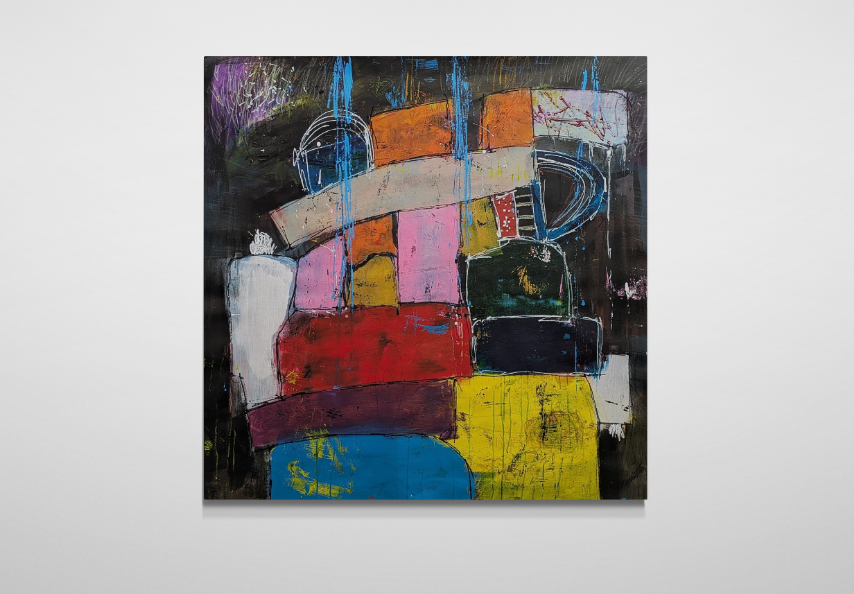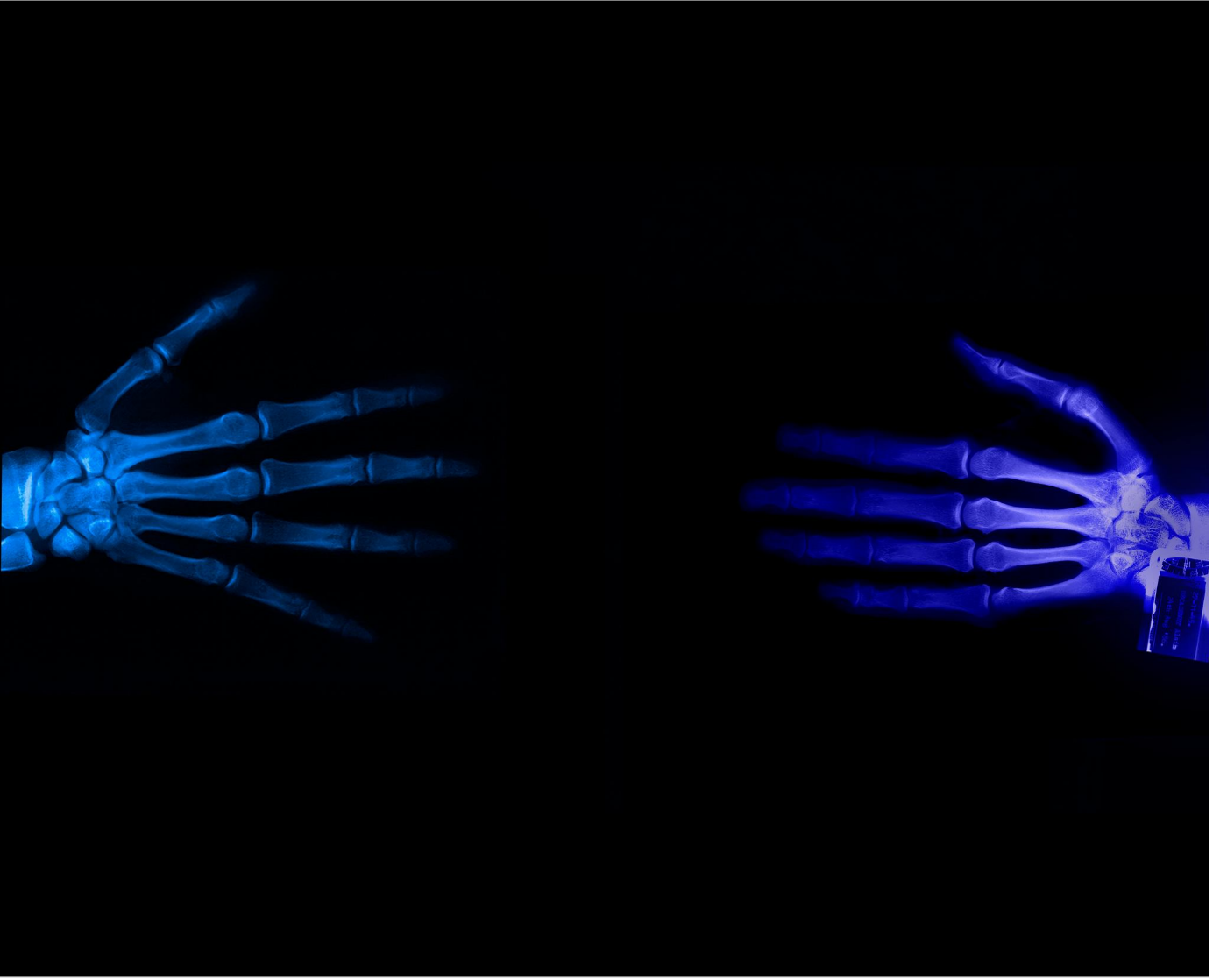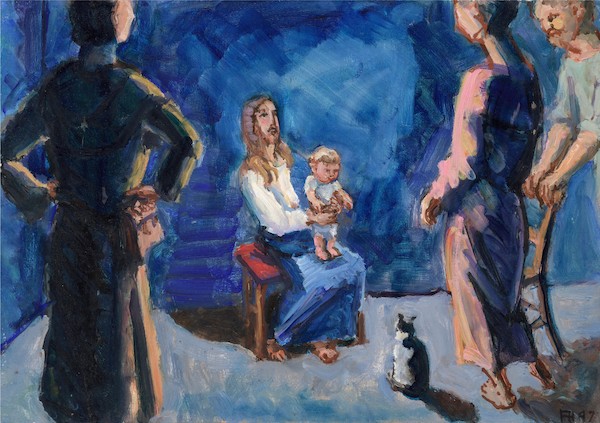Now we want to say something about the nineteenth century. It is important to note that a number of different movements were at work concurrently, so that it is impossible to simply lump everything together under one label. Indeed, the art of the nineteenth century reveals an extremely complex picture. We are going to skip over the eighteenth century, during which the old died away and the new was slowly taking shape.
There are two main directions at work in the nineteenth century. The first one, which you will often find mentioned in writings on art history, moved steadily in a more realistic direction, after the work of people like Géricault and Delacroix. The school of Fontainebleau, and Realists like Courbet and Manet formed some of the stops along the way; and the movement finally found its conclusion in the Impressionist art of which Monet and Degas were the greatest masters.
It is often forgotten, however, that there was also another stream at work during the nineteenth century. It is important because it involved a much larger number of artists than the abovementioned movement, and because at that time it was certainly perceived as the proper kind of art. We are thinking of the so-called ‘Salon art’, often given that name because it was displayed at the large official annual exhibitions, which in Paris were called ‘Salons’.
I would like now to delve a little deeper into the latter movement. It is characterized by a naturalism taken to the extreme. Artists attempted to copy visible reality as precisely as possible, making use of the methods developed for that purpose since the Renaissance but never before applied in such a consistent way. Art became a purely photographic representation; and this comparison is all the more appropriate because the art of photography was built on those same ideals around the middle of the century.
Salon art tried to represent reality by basing itself entirely on the visual givens. In a certain sense it knew nothing more than what is observable to the eye. Or rather, if we take historical paintings as an example, it was concerned with what you would have seen had you been present on that particular day. The past is then reconstructed, as it were, so that the painting becomes a large, colourful report of what occurred.
Artists handled biblical subjects in the same way: in parallel with the way in which Renan made his or her observations, artists offered a reconstruction of what happened, of how ‘it really was’ – that is to say, of how you would have observed it had you been present yourself. The ‘invisible’ spiritual elements are not given artistic expression; the observer may gather them from what the painting offers, but the artist does not deal with them in his or her depiction of the event. This principle also guided the Bible pictures that, quite recently, were so liberally used as instructional aids (and which are sometimes still used today).
The content of this art is whatever is visible and observable; it attempts to give a literal portrayal of the theme or event. This is very different from the seventeenth century, when artists searched for typical summarizing situations, for themes that concretized universal human motifs. Instead, all kinds of peculiar moments are chosen: if we are dealing with biblical stories we might see Jacob on the morning after he fought with the angel at Jabbok; if it is a historical event, we see something like the famous picture of the little British princes sitting on their beds just prior to the moment when the door is opened and they are slaughtered (a painting by Delaroche); if the painting is meant to offer a glimpse of the daily world around us, we will see people at work, street scenes, and so forth. We no longer see paintings in which the themes are chosen with great care so as to reveal some characteristic aspect of our humanness; nor do we see the use of the earlier types of images, which, despite the great profusion of possibilities, resulted in a simple, clear iconography that was immediately understood and involved universal human truths and structures.
There are many nineteenth-century paintings which one would never be able to understand were it not for their extensive titles. Every painting is completely unique, in composition as well as choice of theme – just as every photograph is unique, revealing a different frame of reality. We see how soldiers prepare themselves for war in a particular place for a particular battle. We see how a specific king in a specific situation called a meeting; we see kittens playing with each other, and an old man sitting dreamily beside his wood stove, and a group of retired soldiers playing a game together, etc. etc.
There is an endless supply of available subjects, and they are not connected together by any guiding principle. It seems that the structure which people of earlier times observed in the cosmos and in their own lives has been left out. It is as if the vision of reality presented by the older style of art gives way to a visual perception of details and chance happenings in which everything is given equal weight. In a rather brilliant way these artists leave out everything that could supply a meaning or offer any reasons. For example, we are shown a musical army brigade, not portrayed in any characteristic activity that could reveal the meaning of their work but just as a bunch of people in uniform practicing their drumming, all jumbled together and in no particular order. As a result, the paintings of the nineteenth century depict all sorts of things that previous artists would never have thought of painting; but they often take on a nondescript banality which helps explain the reaction at the end of that century that eventually leads to the birth of modern art.
The other nineteenth-century movement is the one you will find described in the literature of art history. Therefore we need not say too much about it. In the first place we may note that, technically speaking ( i.e. in the painting style), this art differs from the art we just described, though at root it is not as different as has sometimes been suggested. Even Courbet refused to paint anything other than what he could see. In general it is a movement that avoids biblical or historical subjects. Its artists tended to have an eye only for that which is directly observable: a boulevard in Paris, a dance lesson (Degas), a random corner of a landscape, a barmaid, etc. Without exaggeration we can say that the idea of an actual theme has disappeared from art. Consequently these paintings do not really require titles. We see people practicing water sports, an open-air dancing party, jockeys exercising their horses, etc. There are no allegories, no references to the salvation story, no decisive historical moments, no efforts to depict characteristic aspects of human life. No, they would prefer to show people sitting in an outdoor café, or a train passing in the distance, or the sun shining through the leaves of the trees . . . Apart from the fact that the artists in this movement were sometimes much more talented than the Salon artists, their art is also often more enjoyable because it makes no pretence of being just like the art of previous centuries, of presenting something meaningful (such and such a person shown at the corpse of some famous person, for example), of presenting biblical truths, and of capturing the profound moments in life.
The art of the Realists and of the Impressionists is based on the world around them, without any false pathos, without facades, without a lot of fuss. They managed tastefully to avoid the platitudes of the Salon art; as a matter of fact, the followers of this movement were constantly battling with the Salon artists. If Salon art found its content in the theme, and often became so meaningless exactly because that chosen theme was so completely meaningless or banal, then the other movement really had no theme at all, and its content is not even really the depicted givens – which are actually no more than un coin de la nature (‘a sample of nature’). Those artists often gave the name ‘motif’ to what they portrayed, to the subject on which their art was based. Cézanne, for example, spoke of travailler sur le motif. That motif did not really comprise the content of the painting. The content and meaning of the work were to be found, rather, in the way in which that motif was worked out or artistically realized.
The meaning lies in the composition or the painting style. The motif of an impressionistic painting can be a rather random landscape: that landscape forms the point of departure for the artistic activity in which the real statement is the way in which that motif is rendered on the canvas. The content, in short, comes to lie in the composition and style, while the given motif serves only as an inspiration toward that. The motif is present, but one must not seek the painting’s true content in that motif. As we can see, this represents a substantial shift within the structure of the artwork.
********
For other articles belonging to this series, see the articles ‘About the content of works of art’, ‘About the Content of Medieval Works of Art’; ‘The Art of the Fifteenth Century’; ‘Baroque Art’; ‘Theme, Style and Motif in the Sixteenth and Seventeenth Centuries’; and ‘Form and Content of Modern Art’. These articles were originally published in Dutch from 1963-1965 in Ad Fontes.
Published in M. Hengelaar-Rookmaaker (ed.): H.R. Rookmaaker:
The Complete Works 4, Piquant – Carlisle, 2003.
%20(1).png)












